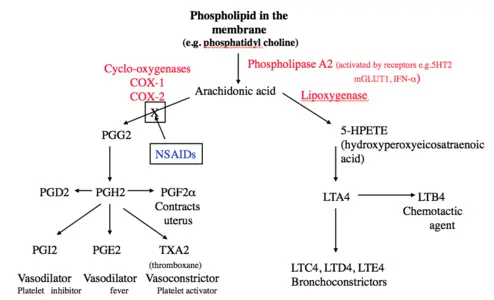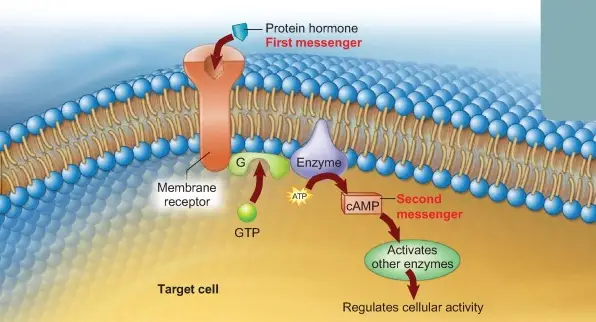Prostaglandins and leukotrienes, two critical groups of compounds within the eicosanoid family, play pivotal roles in the human body. Both are derived from fatty acids and are essential in mediating various physiological responses. Their influence spans from inflammation and immunity to acting as messengers in many biological processes.
Prostaglandins are lipid compounds that act like hormones, influencing pain, inflammation, and other bodily functions, while leukotrienes are primarily involved in inflammatory and allergic reactions. The fundamental difference lies in their structures and roles; prostaglandins are involved in the broad regulation of biological systems, whereas leukotrienes are more specifically engaged in mediating allergic and inflammatory responses.
Despite their microscopic size, the impact of these molecules on health and disease is monumental. Prostaglandins can induce fever, pain sensation, and inflammation necessary for healing, whereas leukotrienes are associated with conditions like asthma and anaphylaxis, making their study crucial for developing medical therapies.

Prostaglandins Basics
Chemical Structure
Prostaglandins are a group of lipid compounds derived from fatty acids. They possess a unique 20-carbon skeleton that includes a 5-carbon ring. This structure is crucial as it allows prostaglandins to perform their role as local hormones, signaling molecules that can trigger a wide range of biological effects.
Production Process
The production of prostaglandins begins with the release of arachidonic acid from cell membrane phospholipids. This process is mediated by the enzyme phospholipase A2. Once freed, arachidonic acid is converted into prostaglandin H2, the precursor for all other prostaglandins, through a series of reactions catalyzed by the cyclooxygenase enzymes COX-1 and COX-2.
- Step 1: Release of arachidonic acid
- Step 2: Conversion to prostaglandin H2
- Step 3: Formation of specific prostaglandins
Primary Functions
Prostaglandins are key players in the human body, involved in:
- Regulating inflammation: They can both promote and resolve inflammation.
- Pain management: They sensitize spinal neurons to pain.
- Fever generation: Act as mediators for fever in response to infection.
- Reproductive functions: Important in labor by affecting smooth muscle contractions.
Leukotrienes Basics
Chemical Makeup
Leukotrienes are also products of arachidonic acid. However, unlike prostaglandins, they include three conjugated double bonds, which is reflected in their name (leuko = white; triene = three double bonds). This structure is significant for their biological activity, particularly in inflammation and allergic reactions.
Synthesis Pathways
Leukotrienes are synthesized mainly through the action of the enzyme 5-lipoxygenase. This enzyme transforms arachidonic acid into leukotriene A4, which can then be converted into other leukotrienes like B4, C4, D4, and E4, each having specific roles in the body.
- Step 1: Activation of 5-lipoxygenase
- Step 2: Conversion of arachidonic acid to leukotriene A4
- Step 3: Further conversion to other leukotrienes
Key Roles
Leukotrienes are primarily involved in:
- Inducing bronchoconstriction: Tightening of airways in the lungs, critical in asthma.
- Promoting allergic responses: Essential in the development of allergic symptoms.
- Regulating immune response: Affecting leukocyte recruitment during inflammation.
Comparative Analysis
Structural Differences
While both prostaglandins and leukotrienes are derived from arachidonic acid, their structures diverge significantly. Prostaglandins contain a cyclopentane ring, a detail that impacts their function and their specific receptor interactions. In contrast, leukotrienes are characterized by their linear structure with three double bonds, which influence their own distinct set of receptors and mechanisms.
Functional Distinctions
Functionally, prostaglandins and leukotrienes also differ:
- Prostaglandins: Broadly affect many tissues and organs. They can dilate blood vessels, inhibit acid secretion in the stomach, and influence platelet aggregation.
- Leukotrienes: More specifically target certain conditions such as asthma and allergic reactions. They do not have a widespread effect on blood vessels but are more focused on smooth muscle contraction in the lungs.
Biological Impacts
Prostaglandins in Health
Prostaglandins play a vital role in maintaining health across several body systems due to their involvement in the regulation of biological processes such as inflammation, pain, and healing. Here are a few key areas where their impact is notably beneficial:
- Gastrointestinal protection: Prostaglandins help protect the stomach lining by promoting the secretion of mucus and bicarbonate, which guard against stomach acid.
- Blood flow regulation: They regulate blood pressure and assist in the dilation and constriction of blood vessels.
- Reproductive health: Prostaglandins are crucial in childbirth, facilitating labor by causing uterine muscles to contract.
Leukotrienes in Disease
Leukotrienes are significantly involved in the progression and exacerbation of various diseases, particularly those related to inflammation and allergic reactions:
- Asthma and allergic rhinitis: Leukotrienes contribute to airway inflammation, bronchoconstriction, and mucus production.
- Cardiovascular diseases: They are implicated in atherosclerosis due to their ability to promote inflammation within blood vessels.
- Inflammatory conditions: Such as inflammatory bowel disease (IBD), where they can increase intestinal inflammation.
Clinical Significance
Prostaglandins in Therapy
The therapeutic applications of prostaglandins have been significant, particularly in the areas of pain management and reproductive health. Notable uses include:
- Pain relief and inflammation management: NSAIDs, which inhibit cyclooxygenase and thus prostaglandin production, are widely used to manage pain and inflammation.
- Induction of labor: Synthetic prostaglandins, like misoprostol, are used to induce labor in pregnant women, as well as manage postpartum hemorrhage.
Leukotrienes as Targets
Due to their role in asthma and allergies, leukotrienes have become primary targets for therapeutic intervention. Medications that block leukotriene synthesis or their binding to receptors include:
- Montelukast (Singulair): A leukotriene receptor antagonist used primarily to manage asthma symptoms and reduce the frequency of asthma attacks.
- Zileuton (Zyflo): A 5-lipoxygenase inhibitor that blocks the synthesis of leukotrienes, used in the treatment of chronic asthma.
Research and Developments
Recent Studies
Recent research has explored new dimensions of both prostaglandins and leukotrienes, uncovering more about their roles in disease and health. Studies have indicated:
- Potential anti-cancer properties of prostaglandins: Research is examining how manipulating prostaglandin pathways might inhibit tumor growth.
- Leukotrienes in atherosclerosis: Studies suggest that blocking leukotriene pathways could reduce the development of plaque in arteries.
Future Directions
Looking forward, the focus on prostaglandins and leukotrienes in medical research holds promising potential for the development of more refined and targeted therapies:
- Precision medicine approaches: Tailoring treatments based on individual genetic profiles could enhance the efficacy of prostaglandin and leukotriene modulators.
- Combination therapies: Using prostaglandin and leukotriene inhibitors in combination with other treatments could improve outcomes in diseases like asthma and arthritis.
Frequently Asked Questions
What are Prostaglandins?
Prostaglandins are a group of physiologically active lipid compounds having diverse hormone-like effects in animals. They are produced in nearly all mammalian tissues and are potent mediators of inflammation, pain, and fever, alongside regulating blood flow to specific organs and controlling ion transport across membranes.
What are Leukotrienes?
Leukotrienes are inflammatory chemicals the body releases after coming in contact with an allergen or irritant. They are part of the immune system and play a key role in the body’s response to inflammation, especially in the lungs, contributing significantly to asthma and allergic rhinitis.
How do Prostaglandins differ from Leukotrienes?
While both prostaglandins and leukotrienes are derived from fatty acids and play roles in inflammation and immunity, their actions and production pathways differ significantly. Prostaglandins are involved in a wide array of body functions, whereas leukotrienes are more specifically targeted towards allergic and inflammatory responses.
Why are Leukotrienes important in asthma?
Leukotrienes cause tightening of airway muscles and the production of excess mucus and fluid, all of which contribute to asthma symptoms. Because of their role in the inflammatory pathway, they are a primary target for certain asthma medications aimed at reducing symptoms and managing flare-ups.
Conclusion
Prostaglandins and leukotrienes serve as fundamental components of the body’s response systems, influencing everything from basic inflammation to complex allergic reactions. Their study not only deepens our understanding of human biology but also aids in the development of targeted therapies for a range of disorders.
Understanding these molecules’ diverse roles offers invaluable insights into their potential as therapeutic targets, particularly in inflammatory and allergic diseases. This underscores the importance of ongoing research and clinical studies aimed at harnessing their biological activities for improved health outcomes.

